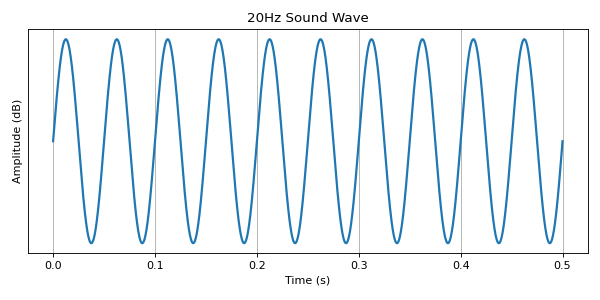Sound Wave

A sound wave is a wave of pressure that travels through the air (or another medium like water or solids) that our ears can perceive.
Sound waves are produced when when a vibrating object exerts force or pressure, setting the molecules to oscillate around their equilibrium position.
The rate of oscillation of these molecules is what determines the frequency of the sound, while the maximum distance they move away from their equilibrium position defines the amplitude.
These characteristics give a specific sound its unique pitch and loudness.
We measure the frequency of sound in cycles per second, known as hertz (Hz). For instance, 440 Hz indicates 440 cycles per second.
The amplitude of a sound is gauged by the maximum displacement of the medium's molecules.
This displacement results in pressure fluctuations within the medium, which we express in units known as the decibel sound pressure level (dB SPL).
The amplitude largely determines the loudness of a sound.
Individuals with typical hearing can perceive sounds as soft as 0 dB SPL and generally tolerate up to around 120 dB SPL.

Recommended videos: